Have you ever dealt with a passive-aggressive person? You know the type—they avoid confrontation but find subtle ways to aggravate you. Maybe a co-worker who says, “No problem!” but then doesn’t do the task Or a friend who says they’re “fine” but then gives you the cold shoulder.
Passive-aggressive behavior can be hard to call out, but that doesn’t mean you have to just take it. Here are a few ways to give them a taste of their own medicine and subtly annoy them right back.So let’s how to annoy a passive-aggressive person.
Table of Contents
1. Ignore Explain: Pretend Not to Notice Their Behavior
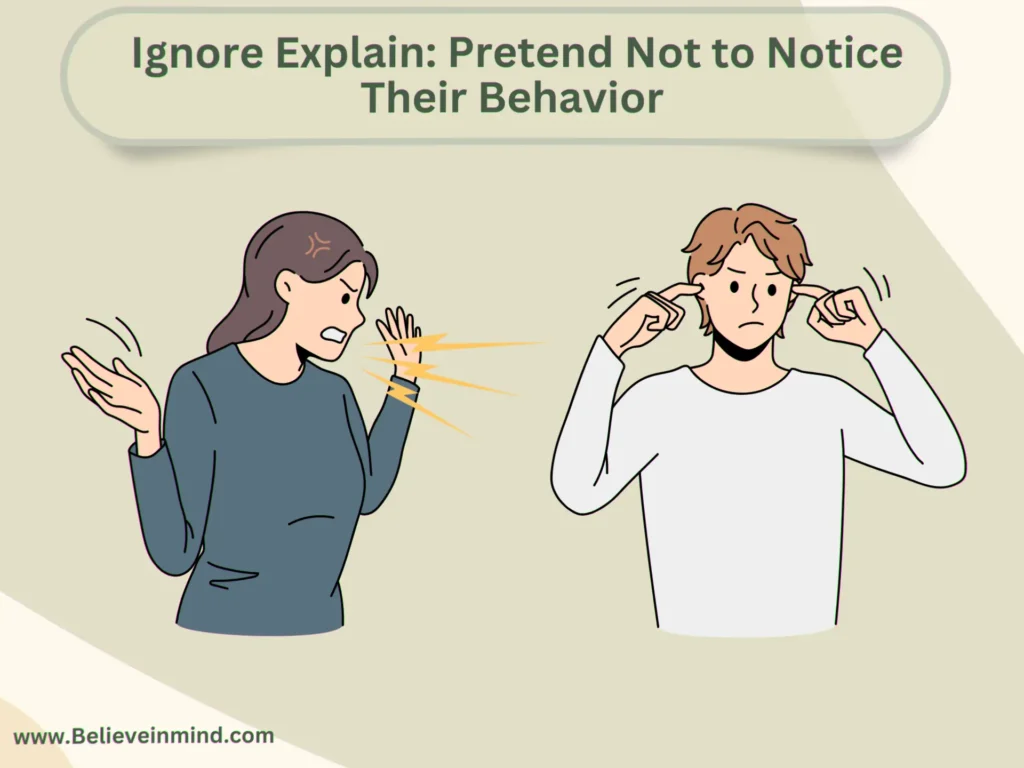
The best way to get under their skin Pretend not to notice their passive-aggressive behavior. Act oblivious to their subtle digs, sighs, and eye rolls.
When they make an offhand comment about how you always leave your dishes in the sink, smile and say, “Oh, do I? I hadn’t noticed.” Then continue as if nothing happened. Their goal is to make you feel guilty without directly confronting you, so not giving them satisfaction will drive them nuts.
If they send a snippy email CC’ing your boss, forward it to a colleague and ask if they can explain what the issue is because you don’t quite understand the problem. Feigning confusion at their indirect communication highlights how unproductive it is and shifts the focus back to them.
When they give you the silent treatment, go on about your day as usual. Don’t pester them with “What’s wrong?” or try overly hard to make conversation. Act as if everything is normal, and you don’t even realize they aren’t speaking to you. Coming across as utterly unfazed by their behavior will likely prompt them to break the silence since the cold shoulder isn’t achieving the desired effect.
In the end, the best way to deal with passive aggression is not to deal with it at all. Remain calm and detached from their actions, and soon their behavior may start to look rather silly and petty. And that, my friend, is the sweetest revenge.
2. Call Out: Point Out the Passive-Aggressive Behavior as It Happens.
The best way to get under their skin Call them out on their passive-aggressive behavior as it’s happening. When they make a snide comment, say something like, “That seemed passive-aggressive” or “Why don’t you just say what you really mean?” Ask them to clarify vague or indirect statements. Put them on the spot and watch them squirm.
Passive-aggressive people hate having their behavior highlighted. It forces them to either own up to their actions or scramble to deny them, and either way, it’s satisfying to see. You can say things like:
- “It seems like you’re upset but won’t come right out and say it.”
- “Wow, that was a backhanded compliment if I’ve ever heard one.”
- “Are you really ‘fine, or is something bothering you that you don’t want to discuss?”
Call them out in a straightforward yet tactful manner. Point out how their indirect actions impacted you without accusation. The more you highlight the behavior, the less power it has over you. And the less satisfaction they gain from it.
With practice, their go-to mechanisms for avoiding direct communication become less effective. They may start being more upfront to avoid the discomfort of having their behavior spotlighted. Or they may avoid interacting with you altogether. Either way, calling out their passive aggression is a win-win.
3. Repeat: Ask Them to Repeat Back What They Just Said. This Makes Them Accountable.
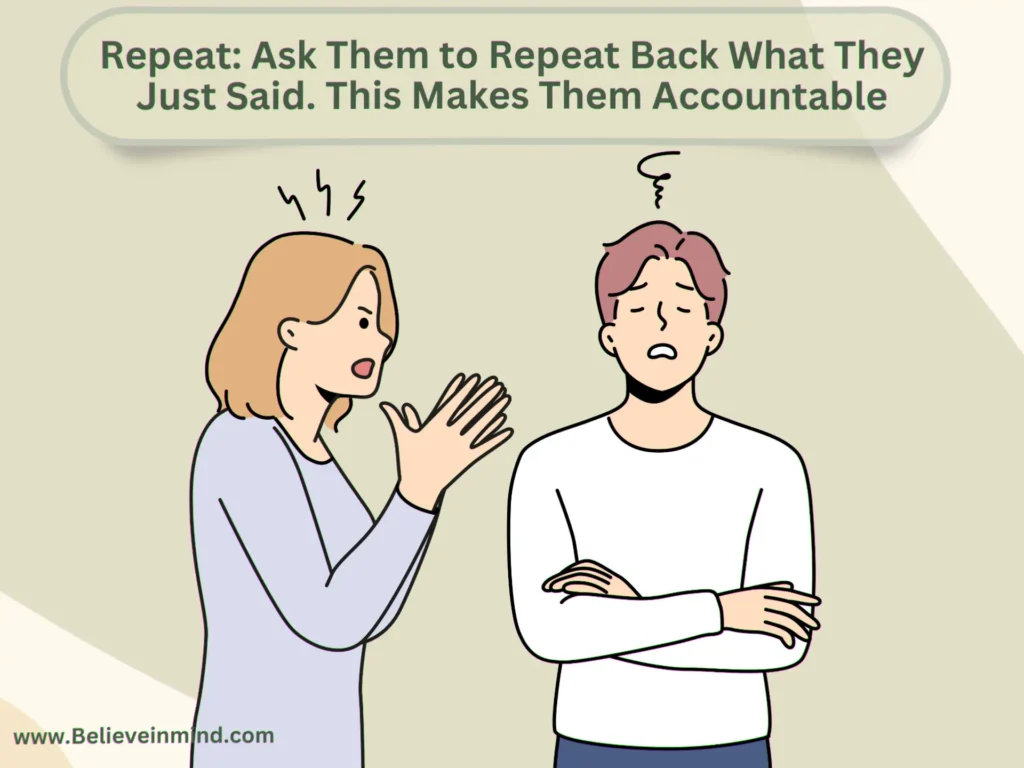
Asking a passive-aggressive person to repeat themselves is a great way to annoy them. When they make an offhand comment meant to provoke you, act like you didn’t quite catch what they said. Say something like:
“I’m sorry, could you repeat that?”
“One more time?”
“What was that again?”
This forces them to directly repeat their veiled criticism or snippy remark, making their behavior obvious and holding them accountable. Passive-aggressive people hate being put on the spot or having their actions highlighted. Their goal is to provoke and upset you while maintaining plausible deniability. By asking them to repeat themselves, you take that ability away.
You can also follow up on their repetition by acting confused about why they would say such a thing. For example:
“Hmm, interesting that you would bring that up. I’m not sure I understand what you meant by that comment.”
“Why would you say something like that?”
This further annoys them by questioning the intention and motivation behind their words. The key is to remain calm and composed. Do not get visibly upset or give them the satisfaction of provoking an emotional reaction. Maintain a detached, questioning attitude instead.
The more you employ this technique, the less passive-aggressive this person may become in their interactions with you. After all, if their snarky comments and veiled insults no longer have the desired effect, what’s the point of making them? You’re training them that their behavior will not be tolerated or given power over you.
4. Question: Question everything they say to irritate them.
The best way to annoy a passive-aggressive person is to question everything they say. Passive-aggressive people hate having their intentions and motivations questioned, so they do it frequently.
Ask them to clarify what they mean when they make a snide comment. Say something like, “What do you mean by that?” or “I’m not sure I understand what you’re implying.” Force them to explain themselves. They’ll stumble over their words as they try to rephrase their rude remark in a socially acceptable way.
When they make an excuse for something, probe deeper. Ask follow-up questions like, “What’s the real reason?” or “Are you sure that’s why?” Don’t accept their first explanation at face value. Dig into the layers of excuses and half-truths they use to avoid responsibility for their actions.
If they issue a backhanded compliment, call them out on it. You might say, “That sounded like an insult disguised as a compliment” or “I can’t tell if you meant that to be nice or not. Did you?” Put them on the spot and make them squirm.
Use their tactics against them by speaking in ambiguities and implications yourself. Issue some subtle criticisms and veiled insults of your own. Give them a taste of their own medicine and see how they like it. Odds are, their reaction will be quite dramatic as they struggle to maintain their cover of passive aggression.
In the end, the more you question a passive-aggressive person’s words and motives, the more flustered and annoyed they’ll become. Their attempts to get under your skin will backfire, and you’ll gain the upper hand. Staying calm and composed will make them even more irritated, allowing you to win the psychological battle.
5. Forget: Conveniently Forget the Passive-Aggressive Comments and Requests.
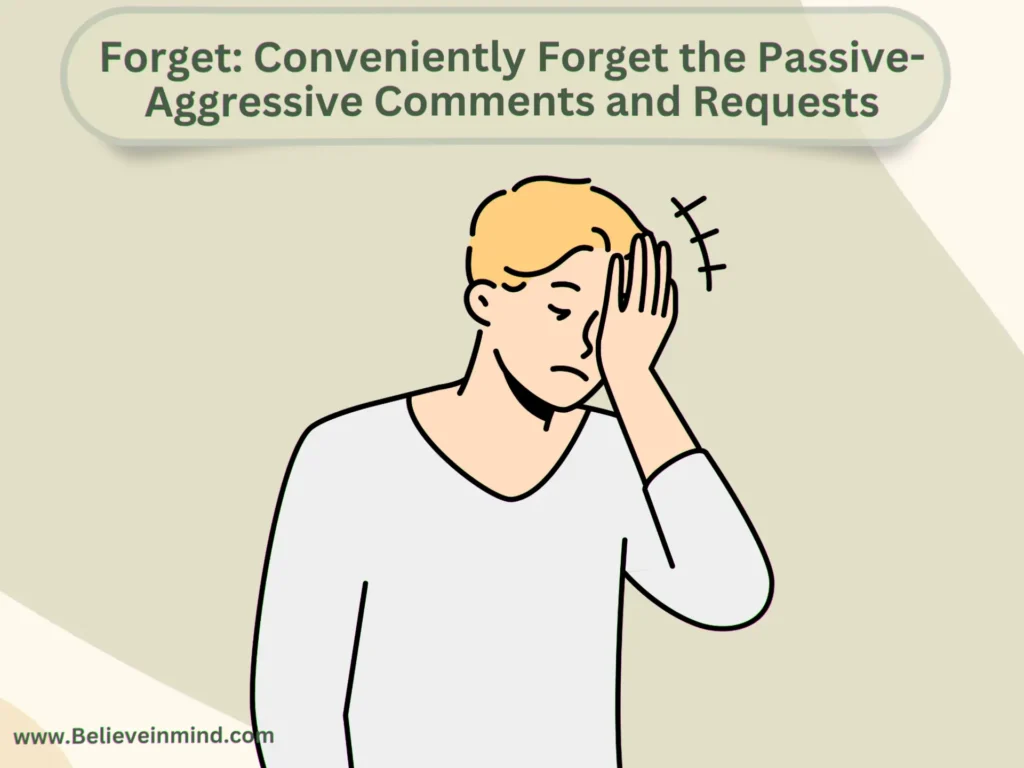
Conveniently forgetting passive-aggressive comments and requests is an easy way to annoy this type of person. Since passive-aggressive people rely on subtly manipulative comments to get their way, not responding or following through is frustrating for them.
When a passive-aggressive person makes a snide comment about you not doing something, act like you didn’t hear it. If they repeat it, say, “Oh, were you talking to me?” and then change the subject. Don’t engage or make excuses. Let the comment hang in the air, unacknowledged.
If a passive-aggressive person asks you to do something obnoxiously, “forget” to do it. When they eventually ask about it again, apologize profusely that it “slipped your mind.” Offer to do it right away, but drag your feet. Claim that you’ve just been so busy that you forgot. The more they nag you to get it done, the more you delay. Oops!
Ultimately, the key is to not reward passive-aggressive behavior with attention, compliance, or long explanations. Stay polite but disengaged, and don’t forget to follow up on their manipulative comments and requests. Your convenient memory lapses and failure to jump when told will really get under their skin. But since you’ve been so apologetic, they’ll have a hard time calling you out on it!
Read more
6. Delay: Take Your Time Responding to Their Actions.
Delaying your responses to a passive-aggressive person’s actions will annoy them to no end. Their goal is to get a reaction out of you, so don’t give them satisfaction.
• Don’t reply to their texts or emails right away. Wait at least 30 minutes or a few hours before sending a response. This shows them they aren’t a priority and you have more important things to do.
• If they confront you in person about something, tell them you need some time to think about it. Let them know you’ll follow up with them in a day or two. Then actually get back to them in the time frame you specified.
• Be vague if they press you for details or a quicker response. Say something like, “This requires my full attention, so I need to ponder it further.” Repeat as needed.
• purposefully take longer to complete tasks or requests they’ve asked of you. Drag your feet and claim you’ve just been “so busy”. They’ll start to realize their tactics aren’t working.
The key is to not engage or make excuses. Simply delay, distract, and defer. Stay polite yet firm in your resolve not to give in to their manipulations. The longer you draw out your reactions, the more you’ll frustrate their efforts. In time, they may finally accept that their passive-aggressive behaviors won’t produce the results they desire. You win by not playing their game.
7. Misunderstand and Misinterpret Their Passive-Aggressive Statements and Actions.
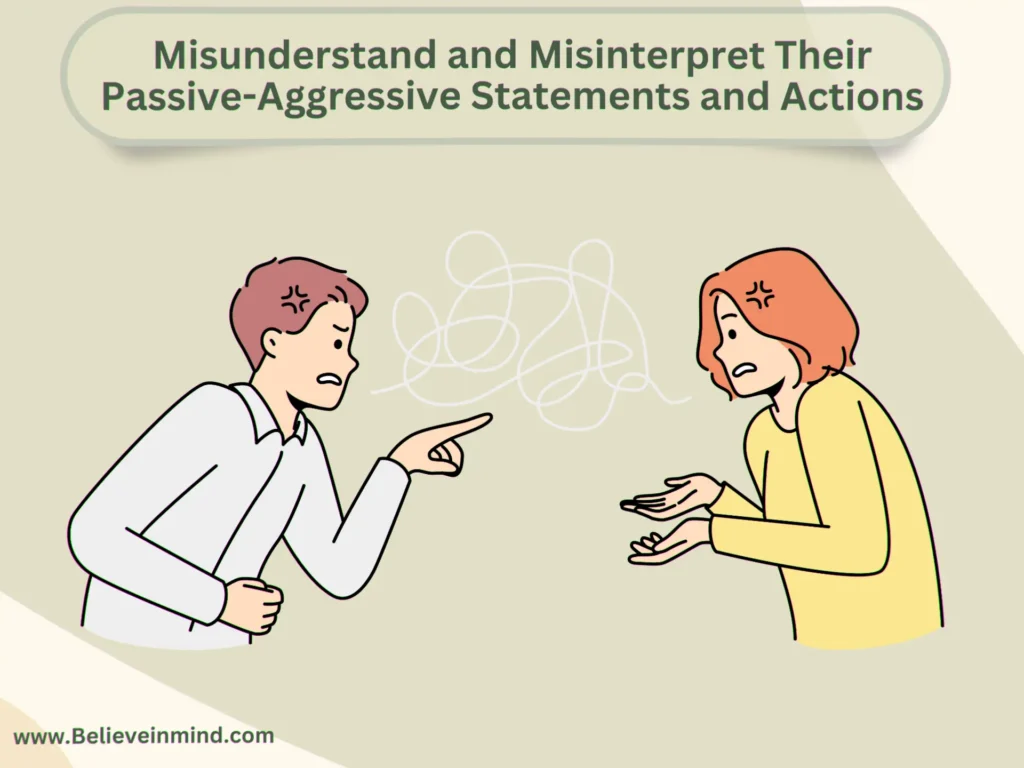
Misunderstanding their passive-aggressive statements and actions is a great way to annoy them. Act like you don’t pick up on their subtle digs and jabs. Respond in an overly friendly, optimistic way.
- When they make an offhand comment meant to make you feel guilty, act confused about why they would say that. Say something like, “I’m not sure what you mean by that. Can you explain?” Watching them struggle to clarify their passive aggression without sounding rude will drive them nuts.
- If they “forget” to do something they promised to do for you, assure them that there’s no problem at all!” Give them an easy out by suggesting that you must have been mistaken in thinking they offered to help with that task. Your understanding reaction will boil their blood.
- When they sulk or give you the silent treatment, continue interacting with them as if everything is normal. Chat away about your day, ask them questions, and suggest doing an activity together. Your obliviousness to their pouting will frustrate them to no end.
The key is to remain calm and composed. Do not get upset or react emotionally. Your passive-aggressive person is trying to provoke you, so do not give them satisfaction. By misunderstanding and ignoring their manipulative behaviors, you turn the tables and gain back control of the situation.
Stay friendly and accommodating at all times. This approach will drive a them absolutely bonkers while allowing you to maintain the moral high ground.
8. Overshare: Provide Excessive Details That the Passive-Aggressive Person Did Not Ask For.
Oversharing every little detail about your life is a great way to annoy a passive-aggressive person. They didn’t ask to hear about your doctor’s appointment or how your cat threw up on the carpet again, but you’re going to tell them anyway.
Launch into long stories describing events that these person has no interest in. Don’t leave out any part of the tale, no matter how mundane or unimportant. Provide excessive specifics, like what you had for breakfast, the exact route you took to get somewhere, or a play-by-play of your favorite TV show episode.
The more inane details you can cram into the conversation, the more exasperated the passive-aggressive person will become. But since they’re too passive to tell you to stop, you can just keep talking and talking. Describe your sock drawer organization system. Recount each item in your shopping cart at the grocery store. Nothing is too trivial or boring to share when you want to get under their skin.
Bombard them with an endless barrage of facts and stories that have no relevance or purpose. Oversharing in this obnoxious way is a subtle form of payback that will drive a passive-aggressive person quietly mad while allowing you to maintain your politeness. After all, you were just having a friendly conversation, right? How could they complain about that?
9. Agree: excessively agree with everything they say.

Passive-aggressive people hate it when you agree with them excessively. So do it often! When they make an offhand complaint or snide comment, they enthusiastically agree. Say something like:
“You’re so right! What an inconvenience.”
“I couldn’t agree more. How annoying!”
Your over-the-top concurrence will frustrate them to no end. They want to get something out of you, not have their ego stroked.
Take their thinly veiled insults and turn them into compliments. For example, if they say something like, “It must be nice to have so much free time!” Respond with:
“Why thank you! I do try to make the most of it.”
This will make their insult fall flat and prevent them from playing the victim.
When they issue “orders” in the form of suggestions, follow the suggestions in the letter. If they say something like “You should really clean the kitchen”, immediately drop what you’re doing and thoroughly clean the entire kitchen. As you’re scrubbing away, cheerfully let them know you’re just following their kind recommendation.
The key is to not give them the reaction they want. Remain polite yet resolute in the face of their manipulative behaviors. Take away their ability to cast themselves as martyrs by refusing to get upset or engage in their mind games. With time and consistency, their tactics will prove ineffective, and their passive-aggressive acts may even decrease.
10. Apologize: Apologies for random things confusing them
Apologizing for random, inconsequential things is a great way to confuse and annoy a passive-aggressive person.
Say “sorry” for little things that don’t warrant an apology. For example, apologize for:
making eye contact with them. Say, “Sorry for looking at you.”
breathing too loudly. “Excuse me, I apologize for my noisy breathing.”
-Blinking. “Please forgive me for blinking just now.”
existing in their general vicinity. “I sincerely apologize for being present in this space at this moment in time.”
Passive-aggressive people thrive on making others feel guilty and awkward. By apologizing for ridiculous, innocuous things, you’re beating them at their own game and giving them a taste of their own annoying medicine. Your over-the-top apologies will frustrate them to no end, especially when they realize you’re doing it intentionally to provoke them.
The key is to keep a straight face and be consistent with random apologies each time you see or interact with a passive-aggressive person. Don’t crack a smile or indicate you’re joking. Act as sincerely as possible to maximize the annoyance factor. With any luck, the these individuals will avoid you altogether to escape the irritating apologies. Mission accomplished!
11. Correct them when they’re clearly wrong about something.
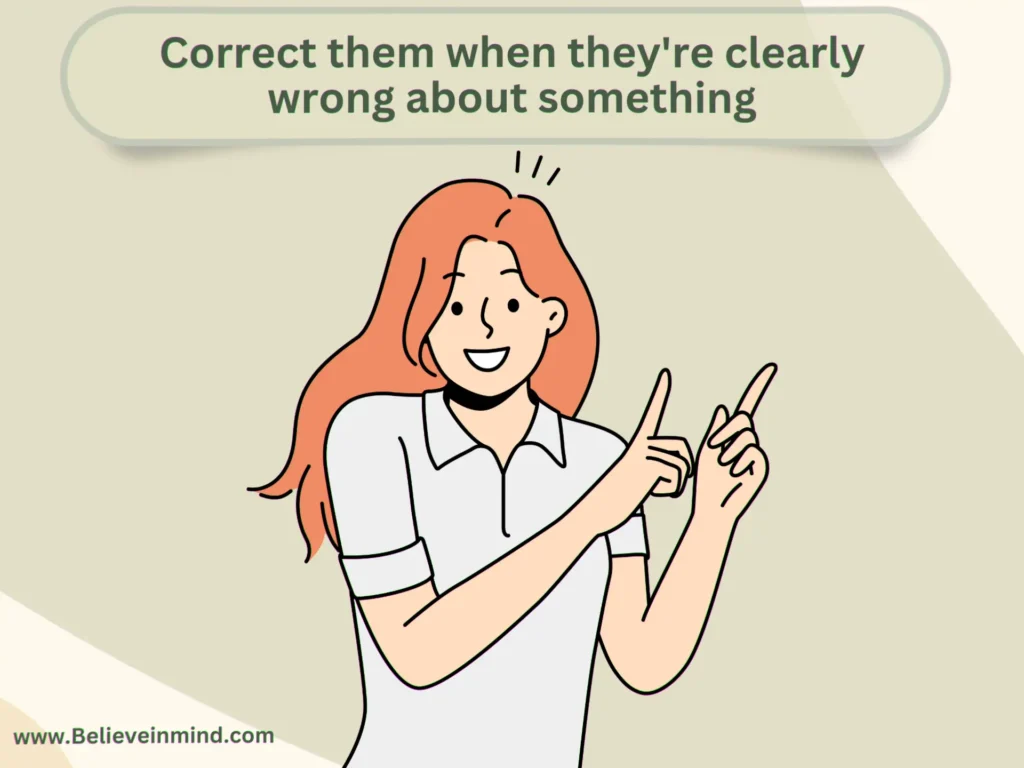
One way to annoy a passive-aggressive person is to call out their behavior when they’re clearly in the wrong. For example, if they make an incorrect statement to gain the upper hand in a discussion, correct them by providing factual evidence that contradicts their claim. Say something like:
“Actually, according to [a credible source], the facts show that [the opposing view] is true.”
Passive-aggressive people thrive on making others feel foolish, so correcting them in a courteous, matter-of-fact way prevents them from manipulating the situation to their advantage.
Another tactic is to ask direct questions when they hint at an issue instead of addressing it head-on. For instance, if they post vague social media updates implying they’re upset with you, comment by asking:
“Is there something you’d like to discuss with me directly?”
This forces them to either engage openly or drop the issue since passive-aggressive behavior relies on indirect communication. Either outcome annoys them by thwarting their attempts to make you feel guilty or upset without cause.
In general, the best way to get under a passive-aggressive person’s skin is to remain calm and composed while calling out their behavior and demanding clarity. Respond to their snide remarks and manipulative actions with politeness and facts.
Passive-aggressive people want to provoke you into anger or confusion, so maintaining confidence and control of the situation will irritate them greatly. Stay focused on their actual words and deeds, not their implied intentions.
12. Compliment: give them backhanded compliments that are insults.
Complimenting a passive-aggressive person in an insincere way is a surefire way to get under their skin. Offer a backhanded compliment, one that actually insults them in a subtle, sugarcoated way. For example:
“Your hair looks so interesting today. I’ve never seen you take such a bold risk with your style before.”
This implies their normal hairstyle is boring and unadventurous. Or say something like:
“Wow, I’m impressed you actually showed up on time for once!”
Even though you’re giving a compliment about their punctuality, you’re pointing out their habitual tardiness. Other options include:
“That outfit is so brave.”
“You made a good point for once in that meeting today.”
“Your cooking has really improved recently!”
With passive-aggressive people, the key is to deliver these false compliments with a smile. Maintain enthusiastic eye contact and really sell sincerity. The mixed messages will drive them nuts as they struggle to determine whether it was actually meant as a genuine compliment or an undercover insult. Either way, you’ll get satisfaction from rattling their cage in such a coy manner.
13. Help: Offer to help them with things they don’t actually need help with.
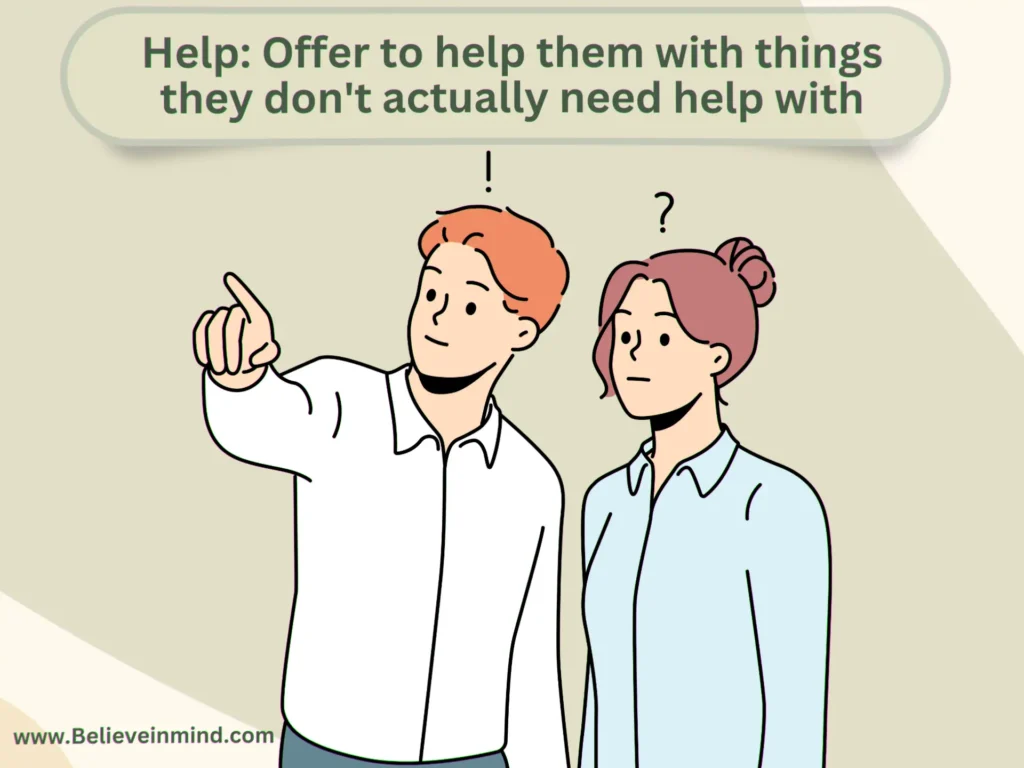
One way to annoy a passive-aggressive person is to offer over-the-top help with small tasks they don’t actually need assistance with. For example:
- Ask if they need help carrying light bags or opening doors. Say something like, “Here, let me get that for you!” and grab their bags or rush to open a door they were capable of opening themselves.
- Offer to help them cook or clean up, taking over parts of a task they were already doing. Ask, “Do you want me to finish chopping the vegetables or loading the dishwasher for you?” even though they have it under control.
- Repeatedly ask if they need help with basic computer tasks like checking email or logging into websites. Say, “Just let me know if you get stuck or have any questions!” implying they may struggle with simple digital skills.
- Call or text to ask if they need a ride for a short trip within walking distance. For example, ask, “Do you want me to drive you to the coffee shop or neighbor’s house?” for a destination only a few blocks away.
The key is to be overly helpful in an exaggerated, unnecessary way for simple tasks that the passive-aggressive person is capable of doing themselves. Your “thoughtful” offers of assistance will highlight their indirect frustration with such small acts of unsolicited help. Pretty soon, they may abandon their passive-aggressive tendencies, if only to avoid your irritating offers to aid them in trivial matters!
14. Forget to Explain
Oops, You Forgot to Do That “Little” Favor They Asked For.
Passive-aggressive people love to ask you for “little” favors and then get upset when you don’t do them. The next time they ask you to pick up their dry cleaning or drop off a package for them, just conveniently “forget”.
Say something like, “Oh my, I’m so sorry that completely slipped my mind! I’ve just been so busy lately.” They’ll have to find another way to get their errand done, even though they’re acting annoyed with you.
Some other ways to “forget” their requests:
- Don’t add their task to your to-do list or calendar. Out of sight, out of mind!
- Get distracted with your priorities and responsibilities. You have your own life to live, after all.
- Blame it on your memory. “My memory hasn’t been the best lately; I apologize.” They’ll have a hard time arguing with that.
- Don’t commit to doing the favor in the first place. Say you’ll “try to fit it in,” but make no promises. Then you have an easy out when you don’t follow through.
Forgetting those “little” favors is an easy way to annoy a passive-aggressive person without directly confronting them. Make them ask someone else to do their bidding or take care of their responsibilities for once. Your time and effort should be spent on the people and priorities that really matter to you. Let the passive-aggressive people in your life learn that they can’t always depend on you to do their dirty work.
15. Blame Explain

It’s Not Your Fault, It’s Theirs; Point Out How They Contributed to the Problem.
Passive-aggressive people hate being blamed for anything. So blame them for the problem and point out exactly how their actions (or inactions) contributed to the situation. Say something like:
“If you had just told me upfront that you didn’t want to go out for dinner, we could have avoided this whole mess.”
“The only reason we’re in this predicament is because you didn’t speak up when you had the chance.”
Calling out their passivity and putting the onus on them will drive a passive-aggressive person nuts. They expect others to be mind readers and know what they want without having to actually communicate it. Highlighting how their failure to be direct resulted in an undesirable outcome turns the tables and makes them accountable.
You can also blame them in a backhanded way by pointing out how their behavior has made things more difficult for you. For example:
“I had to rearrange my whole schedule to accommodate your last-minute change of plans.”
“If only you had let me know sooner that you needed help, I could have made time to assist you.”
The key is to be very specific about what they did (or didn’t do) and how it negatively impacted you or the situation. Don’t make vague accusations; give clear examples so they understand exactly why you’re blaming them. Be warned, however, that blaming a passive-aggressive person may provoke an emotional reaction or cause them to become defensive. But that’s the point, isn’t it?
16. Complain Explain
Whine and Sulk When Things Don’t Go Your Way Give Them a Taste of Their Own Medicine.
Nothing annoys a passive-aggressive person more than someone who complains and whines when they don’t get their way. So give them a taste of their own medicine! Whine, pout, and sulk like a toddler whose toy was taken away. Some ways to do this:
- Throw a temper tantrum over small inconveniences and imperfections. Slam doors, stomp your feet, and scream about how unfair life is. Make a big show of how upset you are.
- Constantly point out their mistakes and flaws in an exaggerated, theatrical fashion. “You always leave your dirty dishes in the sink! I have to do everything around here!”
- Play the victim whenever possible. Blame them for your problems and unhappiness instead of taking responsibility for yourself. “If you had done what I asked, this never would have happened!”
- Make passive-aggressive comments under your breath just loud enough for them to hear. When they call you out on it, deny that you said anything.
- Give them the silent treatment. Refuse to speak to them for as long as possible to make them feel guilty. Then bring up their “behavior” as the reason why you couldn’t talk to them.
No one enjoys constant complaining and whining. Giving a passive-aggressive person a taste of their own irritating behavior may make them realize how frustrating they are to deal with. But ultimately, the healthiest approach is usually open, honest communication.
Read more
Conclusion
So there you have it. A few ways to prod the passive-aggressive person in your life and provoke a reaction This is probably not the healthiest approach for your relationship, but we all have our moments of weakness. The key is not to engage in their games or get pulled into their vortex of indirect hostility and frustration.
Respond with kindness and empathy. Call out the behavior directly and set clear boundaries. You can’t control how they act, but you can control how you react. Stay calm, and remember that their actions say more about them than they do about you. Don’t let their passive aggression get under your skin. You’ve got better things to do with your time and energy.
References
- Passive–aggressive personality disorder From Wikipedia, the free encyclopedia
- Why Are Some People Passive Aggressive?

Let’s boost your self-growth with Believe in Mind.
Interested in self-reflection tips, learning hacks, and knowing ways to calm down your mind? We offer you the best content which you have been looking for.



